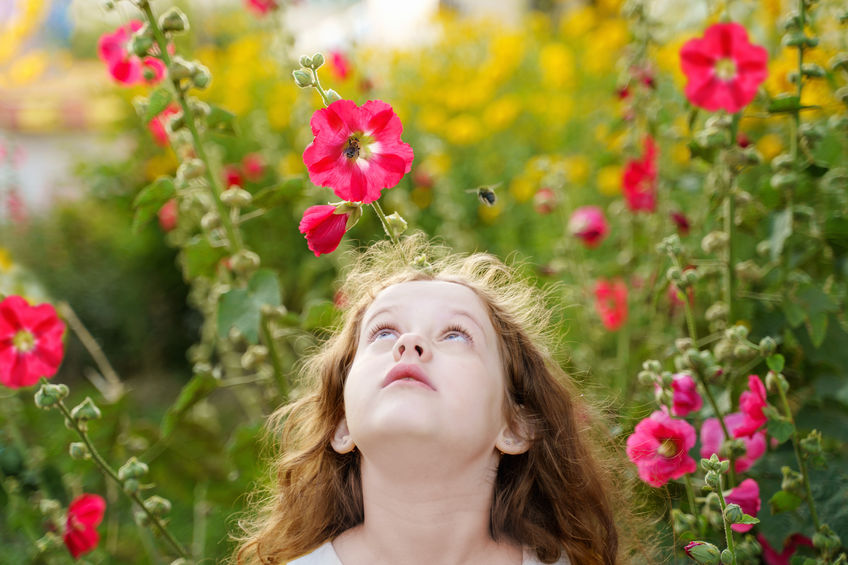
When your child gets stung by a bee, he or she will have an allergic reaction.
This reaction varies from person to person, making some bee stings more severe than others. For most, an insect sting will cause a local reaction that involves swelling, redness and a little pain — something you can quickly treat at home with the items you have in your medicine cabinet.
A select few, however, are extremely allergic to stings, suffering symptoms known as a generalized reaction. Stings in these people can cause anaphylaxis, a life-threatening allergic reaction.
The next time your child gets stung, take the right steps to minimize unwanted symptoms and reduce pain immediately.
Read Next | This Is How to Talk to a Toddler about Losing a Nanny
Step 1: Remove the Stinger
Honeybee, wasp and yellowjacket stings are all similar except for one thing — after a sting, honeybees detach their barbed stinger, causing them to die. On the other hand, wasps and yellowjackets can sting people multiple times without consequence. If you can’t find the stinger after your child is stung, chances are the sting didn’t come from a honeybee.
If you find a stinger, remove it as soon as possible. Many bees leave behind the venom sac after a sting, which will continue to flood the body with venom after the bee has died. It’s OK to pull the stinger out with your fingers or quickly brush it out of the way.
If possible, use a flat, blunt object like a credit card to scrape the stinger from the wounded area. Doing so will prevent squeezing or puncturing the venom sac, which will make the symptoms worse.
Read Next | What You Should Know about Parenting a Child with ADHD
Step 2: Manage the Reaction
Swelling is one of the first symptoms you will notice after your child has been stung by a bee. Don’t be startled if the affected area nearly doubles in size. This swelling can cause the site to feel warm and tender for several hours after the sting. If possible, lay your child down with a pillow or rolled blanket to elevate the area. Then apply a cold compress, such as an ice pack wrapped in a towel.
Itching and pain are also common side effects of a bee sting. If you notice your child itching, try giving them an antihistamine like Benadryl. You can also use an over-the-counter pain reliever, such as Ibuprofen or Tylenol.
Even kids who are barely allergic will likely develop some reaction to a bee sting. If your child has received multiple stings — 10 or more — you should take them to the ER immediately, even if not severely allergic to bee stings.
Read Next | This Is How Breathing Techniques Can Reduce Anxiety in Children
Step 3: Consider the Severity
Keep an eye on your child’s symptoms as they develop to gauge the severity, especially if he or she has never gotten stung before. If the reaction develops beyond swelling, redness, itching and pain, it could mean a generalized reaction.
A generalized reaction can come about quickly and may include symptoms such as:
- Hives and itching
- Swollen tongue and lips
- Difficulty breathing
- Unconsciousness
If you notice these symptoms in your child after an insect sting, take them to the ER immediately. Experienced medical professionals can quickly treat and reduce severe reactions.
Kids who have already received a diagnosis of an allergy to bee stings, which medical professionals can determine through a skin or blood test, may carry around an EpiPen. Using this auto-injectable medication directly after a sting can prevent anaphylaxis.
How to Treat a Bee Sting
No one likes getting stung, even grown-ups. If your child is stung, remove the stinger as soon as possible to reduce the severity of the reaction. Manage symptoms like itching and swelling through the use of a cold compress and over-the-counter medication. Generalized reactions are rare, but if you notice common symptoms in your child, take them to the ER right away.
To avoid stings, teach kids to keep their distance from bees when outside. If you don’t bother them, they won’t bother you. You should also avoid dressing your kids in bright-colored clothing in spring, as bees can confuse them with a pollen-filled flower. If a two-winged pest decides to invade your child’s space outside, show them how to safely get away by walking off quickly.

Read Next | Healing after Vaginal Birth
 Kacey Bradley is the lifestyle and travel blogger for The Drifter Collective, an eclectic lifestyle blog that expresses various forms of style through the influence of culture and the world around us. Kacey graduated with a degree in Communications while working for a lifestyle magazine. She has been able to fully embrace herself with the knowledge of nature, the power of exploring other locations and cultures, all while portraying her love for the world around her through her visually pleasing, culturally embracing and inspiring posts. Along with writing for her blog, she frequently writes for sites like US Travel News, Thought Catalog, Style Me Pretty, Tripping.com and more! Follow Kacey on Twitter and subscribe to her blog to keep up with her travels and inspiring posts!
Kacey Bradley is the lifestyle and travel blogger for The Drifter Collective, an eclectic lifestyle blog that expresses various forms of style through the influence of culture and the world around us. Kacey graduated with a degree in Communications while working for a lifestyle magazine. She has been able to fully embrace herself with the knowledge of nature, the power of exploring other locations and cultures, all while portraying her love for the world around her through her visually pleasing, culturally embracing and inspiring posts. Along with writing for her blog, she frequently writes for sites like US Travel News, Thought Catalog, Style Me Pretty, Tripping.com and more! Follow Kacey on Twitter and subscribe to her blog to keep up with her travels and inspiring posts!
Like what you read? JOIN the Mommybites community to get the latest on FREE online classes, parenting advice, events, childcare listings, casting calls & raffles, and our Parents With Nannies Facebook group. SIGN UP NOW!



